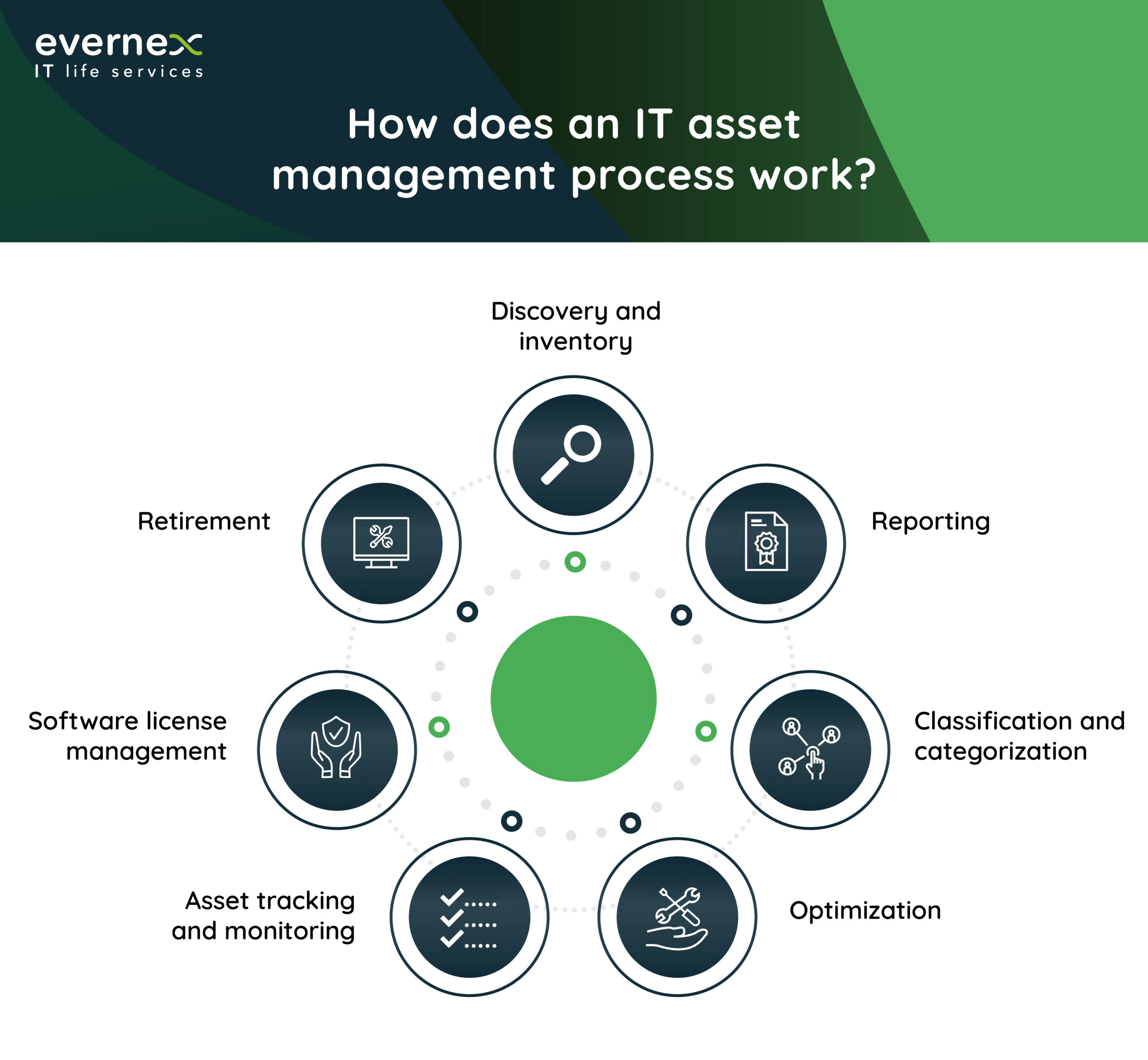As more and more companies increase their investment in IT through the acquisition of hardware and software, optimizing their budget and making the most of their infrastructure becomes more important than ever. Whether an organization’s assets are just a few portable devices or a whole data center, IT asset management can play an important role in helping them make the most of their investment.
What is IT asset management?
In short, IT Asset Management (ITAM), is the process of tracking, managing and optimizing the use and value of an organization’s technology assets. This includes hardware, software systems, licenses, and other IT resources. Ultimately, ITAM comes down to making strategic decisions about IT assets.
This often means trying to reduce the Total Cost of Ownership (TCO) of said assets with a holistic approach to maximize the value of hardware throughout its lifecycle.
The lifecycle of IT assets is usually split into three different stages: 1) Acquisition, 2) Operation and 3) Renewal or Disposal.
Why is ITAM important?
The importance of IT Asset Management comes from the many ways in which it helps organizations, including:
- Tracking and controlling technology assets, reducing the risk of security breaches or license violations.
- Optimizing asset utilization and improving cost efficiency.
- Ensuring software license compliance to avoid financial penalties.
- Facilitating informed decision making and providing accurate IT inventory data.
- Improving IT service delivery through effective resource planning.
How does an IT asset management process work?
For most organizations, an IT Asset Management process typically includes the following steps:
- Discovery and inventory.
Collecting information about all technology assets and updating an IT asset database. - Reporting
Generating reports on technology assets, usage, and costs for informed decision making. - Classification and categorization.
Grouping assets based on type, location, owner, and other relevant factors. - Optimization
Identifying underutilized or surplus assets and reallocating or disposing of them as appropriate. - Asset tracking and monitoring.
Continuously monitoring assets and keeping the IT asset database up to date. - Software license management.
Monitoring software usage and ensuring compliance with licensing agreements. - Retirement
Safely disposing of true end-of-life assets and retiring them from the IT asset database.
 All of these steps help organizations maintain a comprehensive and accurate view of their technology assets, making it easier to manage and optimize them. Next, we’ll look at the smartest ways to plan, implement and control IT asset management processes.
All of these steps help organizations maintain a comprehensive and accurate view of their technology assets, making it easier to manage and optimize them. Next, we’ll look at the smartest ways to plan, implement and control IT asset management processes.
IT asset management best practices
ITAM best practices include the following:
- Defining an ITAM strategy and governance structure.
- Automating as much of the ITAM process as possible.
- Using data and analytics to inform decision making and measuring the effectiveness of ITAM initiatives.
- Continuously reviewing and improving the ITAM process to keep pace with changing technology.
- Keeping an accurate and up-to-date inventory of all IT assets.
- Regularly reviewing and updating software licenses to ensure compliance.
- Incorporating ITAM into overall IT and business planning processes.
- Establishing procedures for retiring end-of-life assets securely.
- Utilizing technology to track, monitor, and control assets.
- Fostering a culture of responsible technology use within the organization.
Benefits of IT asset management
As we have seen, a thorough and effective asset management plan involves several steps. So why should organizations invest the time and resources necessary to carry one out? The fact is that ITAM can have several benefits for organizations and can help them make better business decisions. Some of these benefits are the following:
- Enhanced risk management through better tracking and management of technology assets.
- Improved cost efficiency by reducing overspending on IT resources.
- Better decision making through access to accurate and up-to-date technology asset information.
- Better allocation of technology resources through more effective resource planning.
- Increased security through better control and management of technology assets.
- Improved compliance with software licensing agreements, reducing the risk of financial penalties.
- Environmentally responsible technology use and disposal through effective end-of-life asset management.
- Improved IT service delivery through optimized use of technology assets.
- Better alignment of technology investments with business goals.
- Increased transparency and accountability through a comprehensive and accurate view of technology assets.
What are the types of IT asset management?
As a category, ITAM can include everything from hardware, software, the cloud and other aspects of IT. The following are the main ITAM categories:
Hardware Asset Management.
Tracking and managing physical technology assets such as computers, printers, and servers.
Mobile Device Management.
Managing and securing mobile devices such as smartphones and laptops.
Network Asset Management.
Managing and maintaining network infrastructure such as routers, switches, and firewalls.
Data Center Asset Management.
Managing the technology assets in a data center, including servers, storage and networking equipment.
Software Asset Management.
Managing software assets including licenses, usage, and compliance.
Cloud Asset Management.
Managing and optimizing the use of cloud-based technology resources.
End-of-Life (EOL) Asset Management.
Safely disposing of technological assets that have reached the end of their useful life.
Partnering with a trusted expert
While IT asset management can deliver great benefits to organizations, it’s key to partner with a company that can deliver the highest level of excellence and optimization from the process. This means achieving a considerable reduction in total cost of ownership while at the same time improving the organization’s sustainability regarding its IT infrastructure.
As an expert provider of ITAM services, Evernex offers companies access to 24/7 global support, multi-vendor hardware expertise and 40years’ experience in optimizing IT assets to increase productivity and cut the total cost of ownership at every stage of their lifecycle.
Evernex’s business model is built on maximizing the use of existing products and materials through repair, reuse and recycling, with end-to-end IT asset lifecycle management. This makes it possible for organizations to incorporate sustainability into their processes and drive their sustainability strategy. Contact our team today for simplified IT asset management services.




